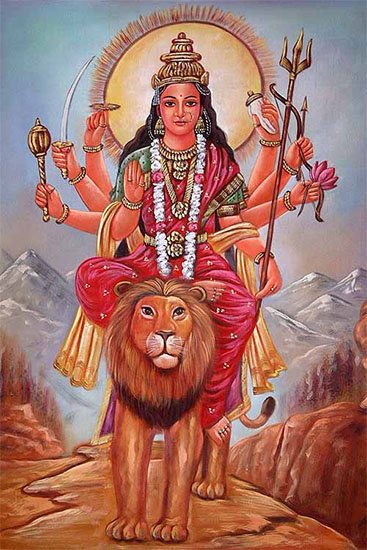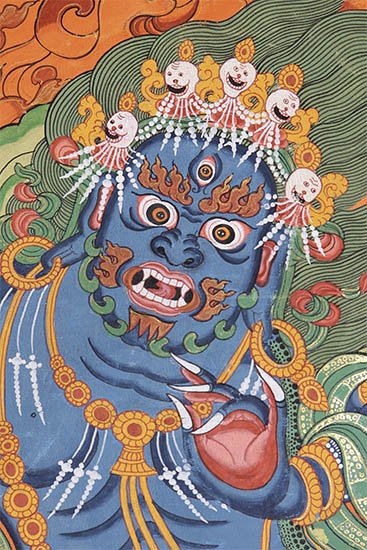Candabhairava, Caṇḍabhairava, Canda-bhairava, Camdabhairava: 3 definitions
Introduction:
Candabhairava means something in Buddhism, Pali, Hinduism, Sanskrit. If you want to know the exact meaning, history, etymology or English translation of this term then check out the descriptions on this page. Add your comment or reference to a book if you want to contribute to this summary article.
Alternative spellings of this word include Chandabhairava.
In Hinduism
Shaktism (Shakta philosophy)
Source: Shodhganga: Iconographical representations of Śiva (shaktism)Caṇḍabhairava (चण्डभैरव) or Caṇḍabhairavatantra refers to one of the thirty-three Dakṣiṇatantras, belonging to the Śāktāgama (or Śāktatantra) division of the Āgama tradition. The Śāktāgamas represent the wisdom imparted by Devī to Īśvara and convey the idea that the worship of Śakti is the means to attain liberation. According to the Pratiṣṭhālakṣaṇasamuccaya of Vairocana, the Śāktatantras are divided into to four parts, the Caṇḍa-bhairava-tantra belonging to the Dakṣiṇa class.

Shakta (शाक्त, śākta) or Shaktism (śāktism) represents a tradition of Hinduism where the Goddess (Devi) is revered and worshipped. Shakta literature includes a range of scriptures, including various Agamas and Tantras, although its roots may be traced back to the Vedas.
In Buddhism
Tibetan Buddhism (Vajrayana or tantric Buddhism)
Source: OSU Press: Cakrasamvara SamadhiCaṇḍabhairava (चण्डभैरव) is the name of a deity [i.e., oṃ caṇḍabhairavāya svāhā], according to the Vāruṇī Pūjā [i.e., Varuni Worship] ritual often performed in combination with the Cakrasaṃvara Samādhi, which refers to the primary pūjā and sādhanā practice of Newah Mahāyāna-Vajrayāna Buddhists in Nepal.

Tibetan Buddhism includes schools such as Nyingma, Kadampa, Kagyu and Gelug. Their primary canon of literature is divided in two broad categories: The Kangyur, which consists of Buddha’s words, and the Tengyur, which includes commentaries from various sources. Esotericism and tantra techniques (vajrayāna) are collected indepently.
Languages of India and abroad
Kannada-English dictionary
Source: Alar: Kannada-English corpusCaṃḍabhairava (ಚಂಡಭೈರವ):—[noun] a formidable form of Śiva.
Kannada is a Dravidian language (as opposed to the Indo-European language family) mainly spoken in the southwestern region of India.
See also (Relevant definitions)
Partial matches: Bhairava, Canda.
Starts with: Candabhairavatantra.
Ends with: Pracandabhairava, Pratipakshacandabhairava.
Full-text: Pracandabhairava, Pratipakshacandabhairava, Pracandabhairavarasa, Candabhairavatantra, Atmi.
Relevant text
Search found 2 books and stories containing Candabhairava, Caṇḍabhairava, Canda-bhairava, Camdabhairava, Caṇḍa-bhairava, Caṃḍabhairava; (plurals include: Candabhairavas, Caṇḍabhairavas, bhairavas, Camdabhairavas, Caṃḍabhairavas). You can also click to the full overview containing English textual excerpts. Below are direct links for the most relevant articles:
Varahi Tantra (English Study) (by Roberta Pamio)
Chapter 1 - The origin of the Vārāhī Tantra < [Summary of the Vārāhī Tantra]
The Skanda Purana (by G. V. Tagare)
Chapter 61 - The Greatness of Vaiṣṇava Tīrthas < [Section 2 - Uttarārdha]